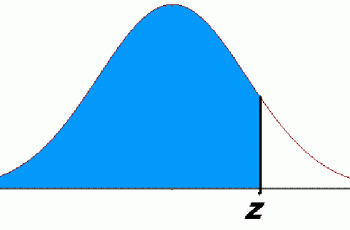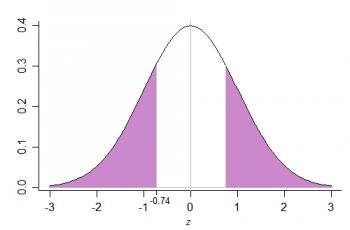Gini coefficient is a measure of statistical dispersion intended to represent the income inequality within a nation or any other group of people.
The gini coefficient measures how far the actual Lorenz curve for a society’s income or wealth is from the line of equality.
Formula to calculate gini coefficient.
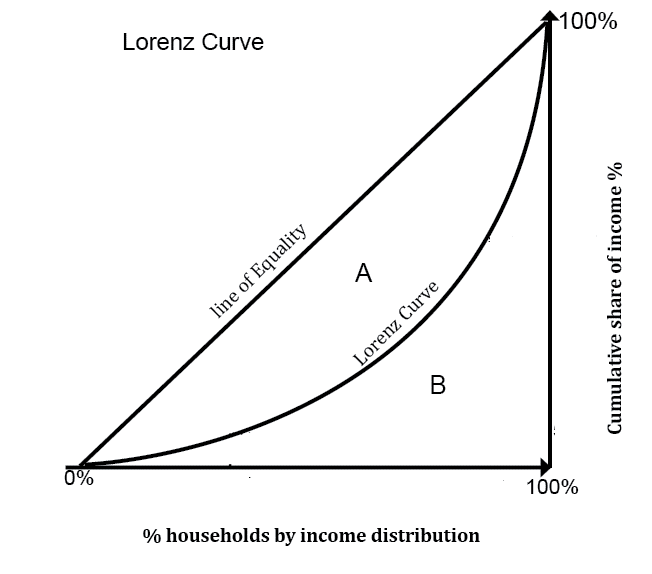
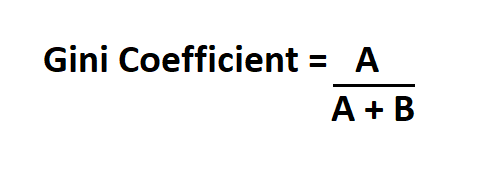
A is the area above the Lorenz curve.
B is the area below the Lorenz curve.
Example:
Suppose you calculated the area below and above the Lorenz curve and found it to be 1500 and 3500 square units, calculate the gini coefficient.
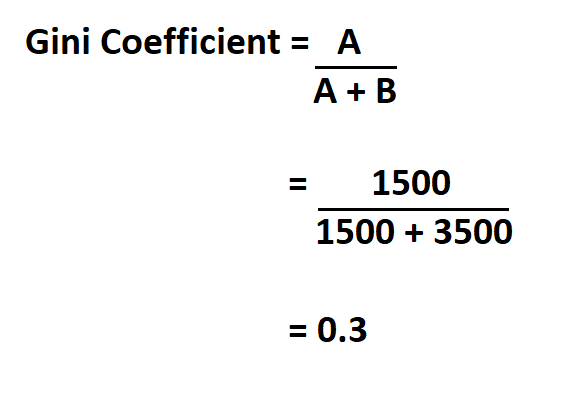
Therefore, your gini coefficient is 0.3.
